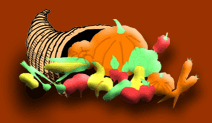VALERIAN By Pearlmoon
Valerian: Vaneriana Officinalis
Other Names: Set Wall, All Heal, English Valerian, Setewale, Capon's Tail, St. George's Herb, Vandal Root, Phu - (referring to the smell), and Garden Heliotrope.
Gender: Female
Element: Water
Planet: Venus or Moon
Magickal Associations:
Valerian is a Druid herb of consecration and purfication. It can be added to a chalis as an herb of peace. It can also be used as an insence to purify a ritual space. If the dried root is gound it can be used as a substitute for grave yard dirt. Valerian can be used in love spells to attract men, as well as in love sachets. It can be used in protection spells and as an aide to sleep.
History/Lore: Valerian was used by Hippocrates in the 4th century BC and appears in Anglo Saxon herbals. In the Middle Ages it was known as an All Heal, and reguarded as a cure for epilepsy. Valerian was first noticed as a medication for epilepsy in 1592 by Fabius Calumna. He claimed that he cured himself of the disease with valerian. Valerian tincture was widely used during WW1 to treat shell shock. Today Valerian is recognized as a rather safe effective sedative that does not react with alcohol and does not cause dependency. (see warning below)
Growing and Cultivation: Valerian grows well in almost any ordinary soil, but will thrive in rich heavy moist soil. In England it can be found in marshy thickets and on the borders of rivers. The flowers should be removed to encourage rhizome growth. Flowers bloom in summer and are followed by tiny seeds with a tuft of white hairs. Propagation is done by seeds sown or by basal cuttings in the spring. Valerian can also be propagated by division in autum. It is a perennial plant with short rhizomes and aromatic pinnate leaves that are about 8 inches long and irregularly divided into 7 to 10 parts of lanceolate or toothed leaflets. Small tubular pink or white flowers are borne in summer and are followed by the seeds as stated above. This plant reseeds itself easily. The young plants don't always flower in the first year but produce beautiful lush green leaves and a good root system. The harvest of the roots is done usually in late September or early October, by cutting back the leaves and digging up the roots. If the plant is still young I would suggest that you only cut it back for the first year and allow the young plant to develop a better stronger root system for the next year. Then harvest as usual. In the second year the plants will have developed enough that a large quantity of root can be harvested still leaving enough to flourish for the next year.
Medicinal Uses: Valerian is a mildly bitter sedative, a warming herb with a musky oder. It calms the nervs, relaxes spasms, improves digestion, reileves pain and lowers blood pressure and heatr rate. The chief constituents of valerian are found in a yellowish-brown oil that is located in the root. These constituents are complex and no one compound or group of compounds has been isolated as responsible for the sedative effect. The roots contain iridoids, known as "valepotriates", that appear to regulate the function of the nervous system. Some authorities claim that the valepotriates are not present in the root itself, but actually develop during processing. Valerian tincture is a common manner of preparation, then added to a tea to bring about it's effects. A tea can also be made out of the root. Valerian is also used in sachets and sleep pillows.
WARNING!! - Never use valerian if pregnent or nursing. Do not use if you are taking antihypertensives, as valerian will further reduce blood pressure and heart rate. Avoid taking valerian if already taking anitdepressants. Although some studies show that valerian does not react alcohol, avoid taking valerian with alcohol as I believe it will increase the sedative effect. Avoid prolonged uninterrupted use of valerian as it may cause a build up in the system, headache and possibly a slight depression. It is best to use valerian 3 to 4 days on and then 4 to 5 days off. Do not give to children under 12 years of age. Do not operate heavy equipment or drive a vehicle while under the influence of valerian. And as always, check with your doctor before taking any herbal supplement.
VALERIAN TINCTURE
4 ounces dried gound valerian root
1 pint of 160 proof vodka or at least 60% alcohol
Mix ingredients together in a clean container. Cover with a tight fitting lid. Store in a cool dry dark area. Shake every day for two to four weeks. Strain through a piece of cheese cloth or a coffee filter. Pour into a clean dark glass bottle and label. For an adult use 20 drops to 1 cup of a hot tea of your choice, 1 hour before bedtime to promote a restful sleep.
VALERIAN TEA Simmer 2 teaspoons of the root in a pint of water for 20 min. Take 1/4 cup, cold, 4 times a day, to produce a calming effect for nerves.

